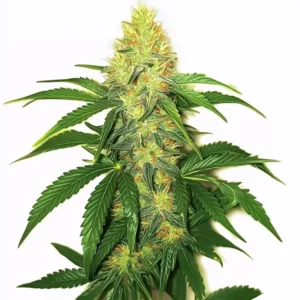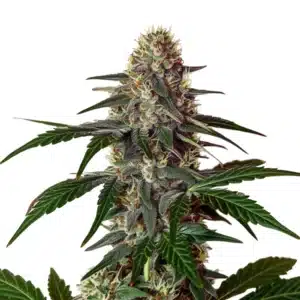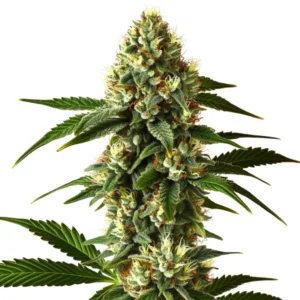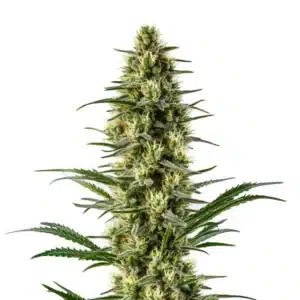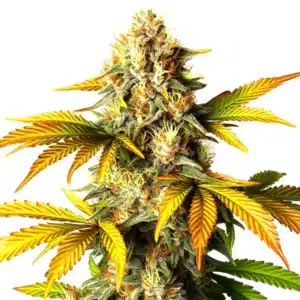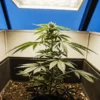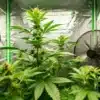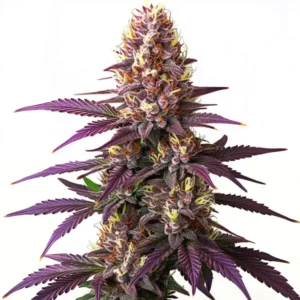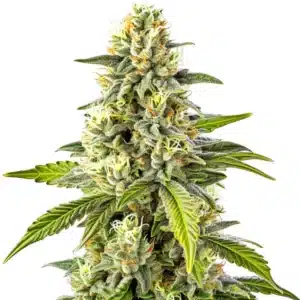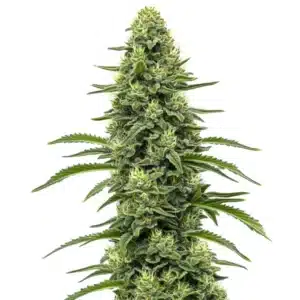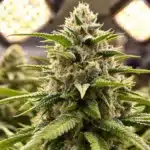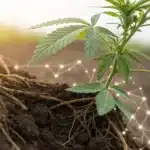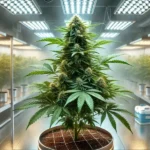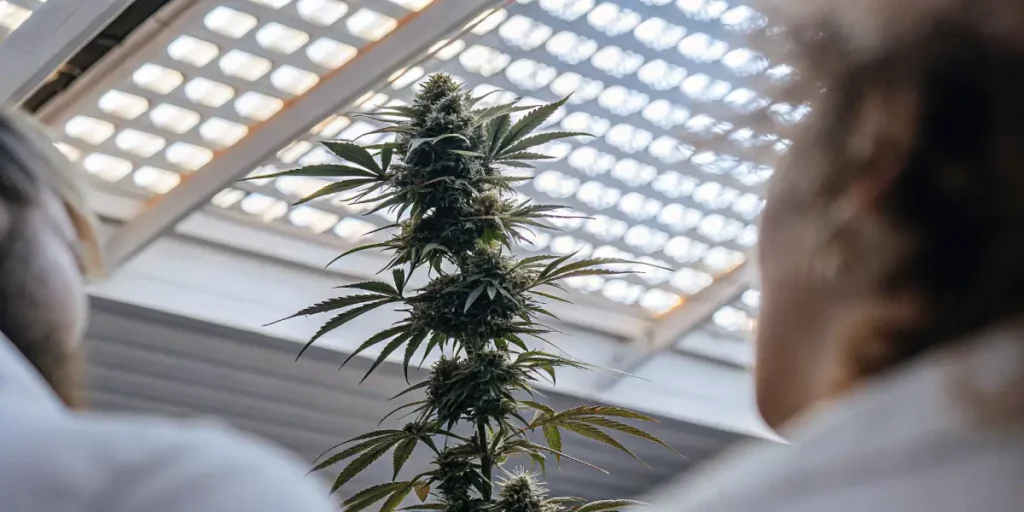
Low Stress Training vs High Stress Training Cannabis
Choosing between low stress training vs high stress training cannabis can be crucial for your plants. Each method has unique benefits and challenges. While both techniques aim to improve yield and plant health, they are quite different in their approach.
Low stress training (LST) involves gently bending and tying down branches. This method encourages the plant to grow sideways, creating more bud sites. On the other hand, high stress training (HST) involves cutting or pinching parts of the plant to stimulate growth.
Recommended Strains
When deciding on low stress training vs high stress training cannabis, consider your experience level. New growers might prefer LST for its forgiving nature. Experienced cultivators could find the aggressive techniques of HST more rewarding.
Low Stress Training Benefits for Cannabis
Low stress training benefits for cannabis are numerous. This method encourages a more even canopy, allowing light to penetrate better. More light means better photosynthesis and potentially larger yields. LST is ideal for indoor growers with limited vertical space.
Using LST, you can manipulate the plant’s shape without cutting. This reduces the risk of infection and stress. For example, a grower with a small grow tent might tie down branches of a AK-47 strain to maximize light exposure.
The low stress training benefits for cannabis extend to its ability to improve airflow around the plant. By training the plant to grow horizontally, air circulation is enhanced, reducing the chances of mold and mildew formation. This is particularly beneficial in humid environments where these issues are common.
Furthermore, LST can lead to better nutrient distribution throughout the plant. Since the branches are spread out, nutrients are more evenly distributed, leading to healthier growth. This is a significant advantage for growers looking to optimize their nutrient management strategies without resorting to high stress methods.
How to Implement Low Stress Training
Start LST by gently bending the main stem and securing it with soft ties. This trains the plant to grow horizontally. As new growth appears, continue to tie down branches. This technique is perfect for autoflowering strains like Gorilla Glue #4.
Monitor your plants regularly. Adjust ties to accommodate growth and ensure no part of the plant is damaged. Consistency is key in LST. With patience, you can achieve a bushy plant with multiple colas.
In implementing low stress training cannabis techniques vs high stress methods, it’s essential to use materials that won’t damage the plant. Soft plant ties or garden wire coated in plastic are ideal for securing branches. These materials prevent cuts or abrasions that could invite pests or disease.
Additionally, patience is crucial when using LST. It’s a gradual process that requires regular monitoring to ensure the plant is adapting well. Over time, as the plant responds to the training, you’ll notice an increase in bud sites and overall plant vigor, a testament to the low stress training benefits for cannabis.
Promos & Deals
Benefits of High Stress Training in Cannabis Cultivation
High stress training cannabis yield comparison shows potential for increased production. HST techniques like topping or super cropping can stimulate growth and increase bud sites. These methods encourage the plant to focus energy on multiple branches rather than a single main cola.
Consider a strain like Blue Dream. By topping this plant, growers can double the number of main colas. This can lead to a more substantial yield if done correctly.
One of the main benefits of high stress training in cannabis cultivation is the potential for larger, more robust plants. By redirecting growth hormones, HST can enhance the plant’s ability to support heavy buds, resulting in a significant boost in yield when compared to untrained plants.
Moreover, HST can lead to a more controlled plant structure, making it easier to manage in limited spaces or when growing multiple plants together. This control can be crucial in maximizing the efficiency of your grow space and ensuring each plant receives adequate light.
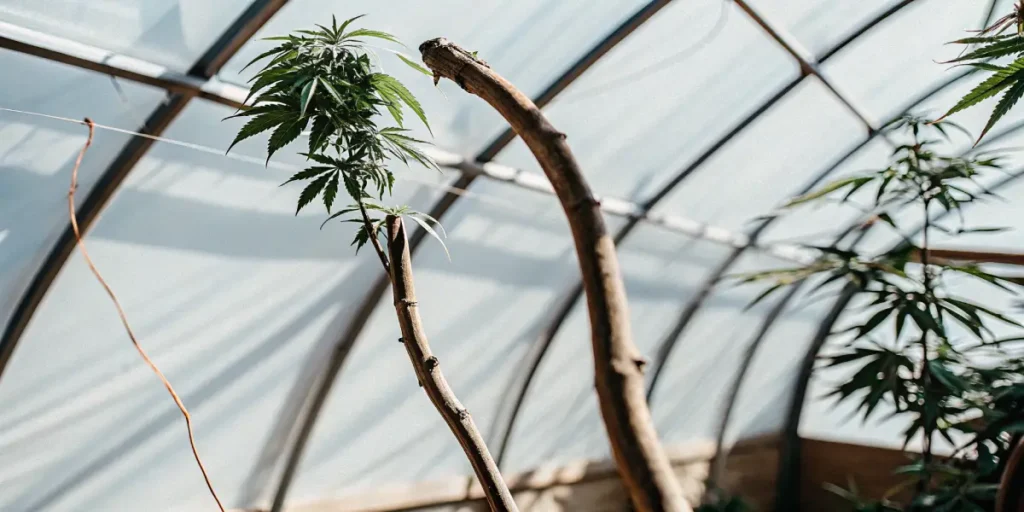
Implementing High Stress Training
Topping involves cutting the main stem to encourage bushier growth. This is best done during the vegetative stage. Use clean, sharp scissors to make a precise cut. After topping, the plant will redirect energy to lower branches.
Super cropping involves pinching and bending branches until the inner fibers break. This sounds intense, but it can make the plant stronger in the long run. The bent branches usually recover and become more robust.
When implementing high stress training, timing is everything. It’s critical to perform these techniques during the vegetative stage to give the plant ample time to recover before entering the flowering phase. This ensures that the plant is healthy and robust enough to support the increased growth.
Moreover, it’s vital to monitor the plant closely for any signs of stress or damage. High stress training cannabis yield comparison shows that while the potential for increased yield is significant, the plant must be healthy and well-cared for to achieve these results. Proper attention to detail can make all the difference.
Cannabis Low Stress Training vs High Stress Results
Comparing cannabis low stress training vs high stress results reveals distinct outcomes. LST generally offers a slower growth rate but with minimal risk. It’s a gentle approach, less stressful for the plant.
HST can lead to rapid growth and increased yields but requires careful management. The aggressive nature of HST means it’s essential to know your plant’s resilience. Strains like Gorilla Glue #4 can handle stress better than more delicate varieties.
When evaluating cannabis low stress training vs high stress results, consider the plant’s overall health and vigor. While LST may result in a more gradual increase in yield, it often produces more resilient plants that are less prone to environmental stressors.
In contrast, HST can push plants to their limits, potentially leading to impressive yields in a shorter time frame. However, the increased risk of plant stress and potential for mistakes means that growers must be diligent in their approach, ensuring that plants receive the care they need throughout the process.
Choosing the Right Method
Decide based on your goals and experience. If you want a low-maintenance grow, LST might be your best bet. It’s ideal for beginners or those who prefer a laid-back approach.
For those looking to maximize yields and have the experience to manage stress, HST can be rewarding. Techniques like super cropping can transform a plant’s structure and productivity.
When choosing between low stress training cannabis techniques vs high stress methods, consider your growing environment and available resources. LST is particularly beneficial in confined spaces, while HST may be more suitable for larger setups where plants have room to recover and expand.
Experimentation is key. By trying both methods on different plants or strains, you can determine which approach best fits your cultivation style and goals. Knowing the nuances between low stress training vs high stress training cannabis will empower you to make informed decisions that enhance your growing experience.
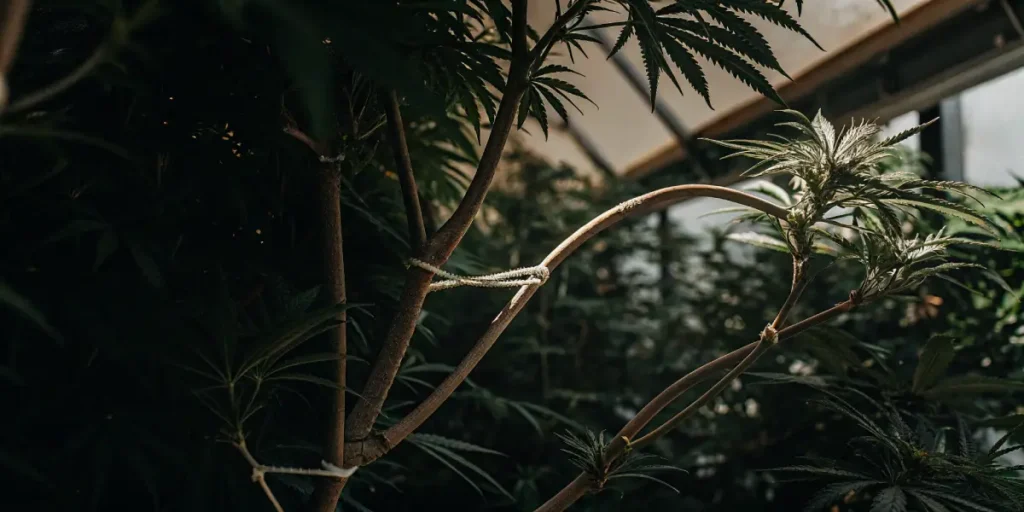
FAQs about low stress training vs high stress training cannabis
What is the difference between low stress and high stress training?
Low stress training (LST) involves manipulating the plant gently by bending and tying branches. This encourages horizontal growth without damaging the plant. It’s a method that minimizes stress and is suitable for beginners.
High stress training (HST), however, involves cutting or breaking the plant to stimulate growth. Techniques like topping or super cropping fall under HST. While it can lead to higher yields, it requires more skill and attention.
In the context of low stress training vs high stress training cannabis, LST offers a more gradual approach, suitable for those looking to reduce the risk of plant damage. HST, on the other hand, can accelerate growth and yield but demands a higher level of expertise to manage potential stress.
Knowing these differences is crucial for growers aiming to optimize their cultivation practices. By selecting the right method based on their experience and goals, growers can enhance their success rates and overall plant health.
Which training method is best for beginners?
Low stress training is often recommended for beginners. It is less risky and allows new growers to learn plant management without the fear of major damage. Techniques are simple and forgiving.
Beginners can start with LST on a strain like AK-47 from Blimburn Seeds. This method provides a gentle introduction to plant training and helps build confidence.
The simplicity of LST makes it an excellent starting point for those new to cannabis cultivation. It offers an opportunity to learn about plant growth patterns and response to manipulation without the potential pitfalls associated with high stress methods.
As beginners become more comfortable with their growing practices, they may choose to experiment with HST techniques to further enhance their skills and potentially increase their yields. The progression from LST to more advanced methods can provide a rewarding learning experience.
Can I use both low and high stress training on the same plant?
Yes, combining both methods can be effective. Start with LST to shape the plant and then apply HST techniques like topping. This approach can maximize yields while maintaining control over plant structure.
Combining methods requires careful timing and observation. Ensure your plant is healthy and resilient enough to handle the stress of multiple techniques.
Integrating low stress training cannabis techniques vs high stress methods on a single plant can offer the best of both worlds. By starting with LST, growers can establish a strong foundation and then use HST to boost growth and yield potential.
Successful integration depends on the grower’s ability to monitor plant health and adapt techniques as needed. This holistic approach can lead to robust plants with enhanced productivity, showcasing the versatility of combining both training methods.
What are the risks of high stress training?
High stress training can lead to plant stress, stunted growth, or even death if not done correctly. It requires precision and timing to avoid permanent damage. Plants can also become more susceptible to disease.
To minimize risks, only apply HST techniques during the vegetative stage. Ensure plants are healthy and monitor them closely for signs of distress. Proper care and attention can mitigate most risks.
The aggressive nature of HST means that mistakes can have significant consequences. It’s essential for growers to understand their plant’s limits and work within them to prevent irreversible damage.
By taking a cautious approach and learning from each experience, growers can reduce the risks associated with high stress training and enjoy the potential benefits of high stress training in cannabis cultivation.
How do I choose the right cannabis strain for training?
Selecting the right strain depends on your goals and experience. For LST, choose strains that are naturally bushy and thrive in confined spaces. Gorilla Glue #4 is an excellent choice for its adaptability.
For HST, opt for robust strains like Blue Dream that can handle the stress of topping and super cropping. Research strain characteristics on Blimburn Seeds to find your ideal match.
Knowing the characteristics of different strains can significantly influence the success of your training efforts. Some strains are more forgiving and adaptable to stress, making them ideal candidates for HST techniques.
On the other hand, certain strains may respond better to the gentle manipulation of LST. By matching your training approach to the strain’s natural tendencies, you can optimize growth outcomes and enhance the overall cultivation experience.


